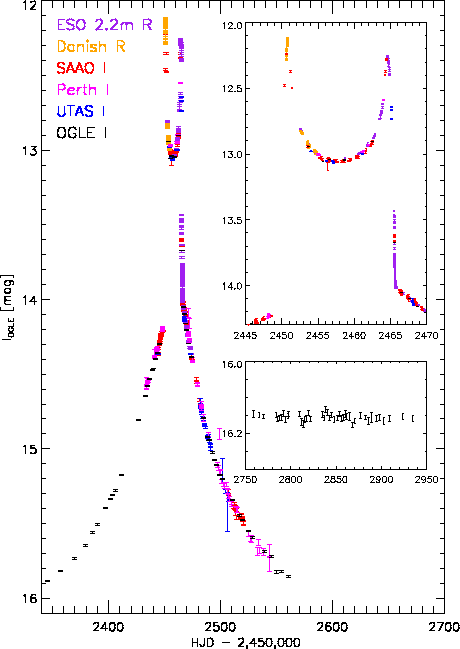 |
As can be seen in the depicted light curve, the event OGLE-2002-BLG-069
involves a pair of fold-caustic passages which produce characteristic peaks
of well-defined shape. With its 2002 season
telescope network involving the Danish 1.54m
and the ESO/MPG 2.2m at ESO LaSilla (Chile), the Canopus 1.0m near Hobart
(Tasmania), the Perth 0.6m at Bickley (Western Australia) and
the SAAO 1.0m at Sutherland (South Africa), PLANET managed not only to obtain
a good coverage of the caustic exit, but also of a fair part of the caustic
entry. Together with data obtained by OGLE with their 1.3m telescope at
Las Campanas (Chile), this allowed to obtain the model parameters of the
underlying binary lens, up to a well-known ambiguity between close and
wide binary lenses, where we find for the instantaneous angular separation
d in units of the angular Einstein radius θE and the mass ratio q between the binary components either
(d, q) = (0.46, 0.58) or (d, q) = (3.68,0.17) with significantly different event time-scales
tE = 105 d or
tE = 287 d, respectively, being
the time in which the source moves by θE with respect to the lens.
The plot to the left shows the complete lightcurve with
I-band data from
OGLE,
Tasmania,
Perth, and
SAAO, as well as
R-band data from the
ESO 2.2m
and the
Danish 1.54m at
ESO LaSilla.
|
